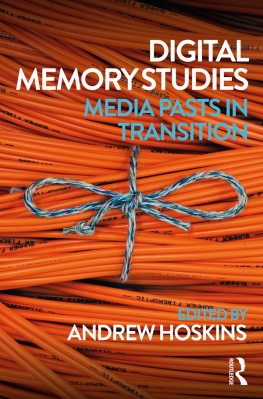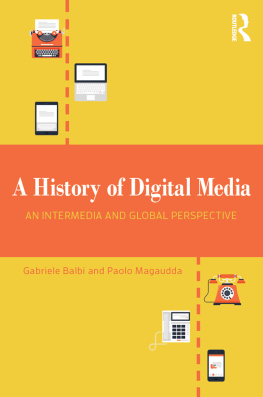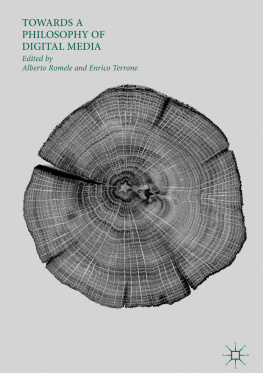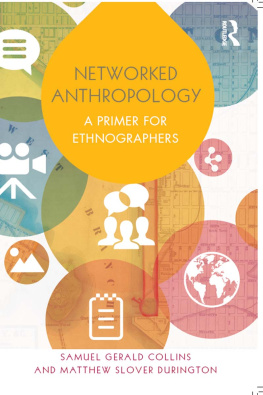
Copyright page
Copyright Anna Cristina Pertierra 2018
The right of Anna Cristina Pertierra to be identified as Author of this Work has been asserted in accordance with the UK Copyright, Designs and Patents Act 1988.
First published in 2018 by Polity Press
Polity Press
65 Bridge Street
Cambridge CB2 1UR, UK
Polity Press
101 Station Landing
Suite 300
Medord, MA 02155, USA
All rights reserved. Except for the quotation of short passages for the purpose of criticism and review, no part of this publication may be reproduced, stored in a retrieval system or transmitted, in any form or by any means, electronic, mechanical, photocopying, recording or otherwise, without the prior permission of the publisher.
ISBN-13: 978-1-5095-0843-3
ISBN-13: 978-1-5095-0844-0(pb)
A catalogue record for this book is available from the British Library.
Typeset in 10.5 on 12 pt Sabon
by Toppan Best-set Premedia Limited
Printed and bound in Great Britain by Clays Ltd, St. Ives PLC
The publisher has used its best endeavours to ensure that the URLs for external websites referred to in this book are correct and active at the time of going to press. However, the publisher has no responsibility for the websites and can make no guarantee that a site will remain live or that the content is or will remain appropriate.
Every effort has been made to trace all copyright holders, but if any have been inadvertently overlooked the publisher will be pleased to include any necessary credits in any subsequent reprint or edition.
For further information on Polity, visit our website:
politybooks.com
Acknowledgements
The earliest incarnation of what would eventually become Media Anthropology for the Digital Age arose from a series of conversations with Andrea Drugan at Polity. As the book progressed, I was provided excellent support and guidance from others at Polity: Elen Griffiths, Ellen MacDonald-Kramer and Mary Savigar. On behalf of Polity, Helen Gray copy-edited the manuscript. My thanks to them all.
My father, Raul Pertierra, offered me refuge in the Philippines for crucial weeks of intensive writing time. While the smoggy city of Manila seems an unlikely writers retreat, my time with Raul allowed me to write several chapters in absolute peace, only occasionally emerging to join him for delicious food and enlightening conversations. My father's patient interest in each chapter's progress, his well-stocked library and his anthropological expertise, made him the world's most overqualified research assistant as I prepared this volume. Also in Manila, with tremendous good cheer Fernan Talamayan and John Lee Candelaria provided me with excellent assistance in putting together materials for the case studies discussed throughout the book. During the same period of writing in Manila, I was kindly invited by Dr Cheryll Soriano and Dr Czarina Saloma to present chapters in progress to their students and colleagues.
Back in Australia, for many months and with much generosity, Graeme Turner offered me thoughtful and detailed commentary on several chapters. Working with Graeme over the past nine years has taught me so much about cultural studies and interdisciplinary collaboration. I would also like to thank Tingting Liu, Diana Jefferies, Jessica Whyte, Zala Volcic and Heather Horst for reading and commenting upon draft chapters. Daniel Miller's perspectives on what anthropology brings to the study of media have been an invaluable guide to me in working through the different elements brought together in this book I thank him for his support and feedback. By reading and editing the entire manuscript, my friend and colleague Judith Pugh helped me to become a better writer. The constructive comments of two reviewers were also helpful in the final stages of writing. While this book was first proposed during my employment at the University of Queensland, by the time of its completion I had moved to Western Sydney University, and I thank both institutions for their support.
The opening sentences of this book were written in the pouring rain, sitting in my car while waiting for my daughter to finish an after-school activity. I soon confirmed that it is not really possible to write more than a paragraph in such conditions. So I would especially like to thank a number of people whose many hours of loving care for my daughter provided me with the space and time to write in recent years: Lyn Shoemark, Raul Pertierra, Karel Reyes, Jeanette Felicitas, Karla Alcala Villanueva, Alex Fortes and Roldan Samson. In different ways, big and small, their efforts made it possible for to me to care for and work on this book.
Introduction
In Manila, two sisters who work in a chain of stores selling electronic appliances share a room in an apartment. Their customers are not rich, but many buy flat-screen televisions or smartphones using credit cards or payment plans, or sometimes with the help of overseas relatives. The sisters have mobile phones, which they use constantly, to chat to their friends and family back in their rural village, or to let their mother know when they are on their way home from work late at night. In a suburban house in Miami, a family of recent migrants watches the television coverage of the first political elections since they moved to the United States. Until this year, the family members had been living in three different countries across Europe and Latin America, and for the youngest member of the family, just starting school with her newly learned English, most evenings of her childhood have included greeting faraway aunts, uncles and grandparents on Skype or other internet platforms. Meanwhile, on the outskirts of Brisbane, a retired businessman lives in a household that includes four televisions, six tablets, four computers, three stereos and multiple mobile phones. He has recently started using the Netflix television streaming service, and has connected music-streaming services to the speakers that are placed throughout his house.
These are the media-rich environments of lived realities of many people around the world today. They happen to be three examples from my own recent life as a media anthropologist and a media consumer, travelling to and researching different communities around the world. Their circumstances may be very different, they may be rich or poor, be keen to adopt new technologies or more reluctant to join the digital revolution. Nevertheless, many millions of people speaking all sorts of languages experience a world in which mediated communication and entertainment is commonplace. Sometimes it is easy to forget that for most people in the world this is a recent transformation and sometimes it is also easy to forget that despite global media and communication technologies being more prevalent than ever before, such access is not universal, and nor is it consistent. However, it is fair to say that mass media and digital technologies today reach most corners of the globe in some way or another. For billions of people, media and communication practices are now deeply woven into the fabric of everyday life. This is true not only for the citizens of big cities; nor only across the suburbs and towns of high-income economies. For people living across tremendously diverse circumstances for tribespeople living in sub-Saharan Africa or in the highlands of South-East Asia, for rural communities in Latin America or for islanders in the Pacific sending a text message, updating a social media profile, or watching a television programme has become a taken-for-granted part of life.
Next page







